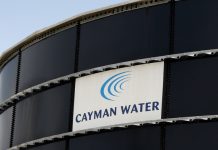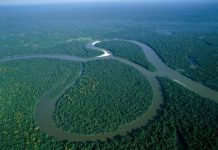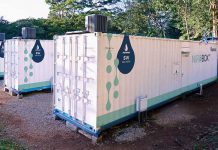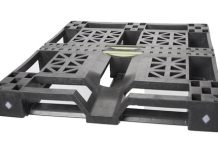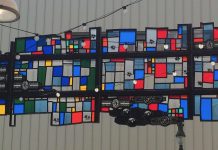by Debra Fiakas CFA
The citizens of a San Luis, Arizona are about to get a new, very tall neighbor. Solar Wind Energy, Inc. (SWET: OTCQB; formerly Clean Wind Energy Tower) recently secured 600 acres in the area to build a solar wind tower. This is a unique design that takes advantage of air heated by the sun’s power utilizes. Fast cooling of the air creates a powerful downdraft that drives turbines at the chimney base. Solar Wind expects the generators attached to its turbines to produce up to 1,250 megawatts of electricity that can be sold to residential and business customers in Arizona.
![Solar+Wind+Tower[1].png](http://www.altenergystocks.com/wp-content/uploads/2017/08/Solar_Wind_Tower_1_.png) |
| Solar Wind Tower Illustration |
Few investors have probably heard of solar wind towers. They are not commonplace, but the San Luis tower will not be the first. A small-scale experimental model of a solar draft tower was built near Manzanares, Ciudad Real, near Madrid, Spain. The demonstration operated successfully for eight years before it was decommissioned. Another tower went into commercial operation in 2010 in Inner Mongolia, China and now produces 200 kilowatts.
Solar towers or chimneys as some call them are low-tech. The power conversion rate is much lower than other solar thermal designs, such as the solar collectors now operating in California and other areas. However, low cost per solar collector area helps offset the low conversion rate.
The solar collectors in California and elsewhere have drawn some criticism. I wrote about Brightsource Energy and its Ivanpah solar thermal power plant in the Mojave Desert in the February 21, 2014 post “The Spaniards are Coming.” Besides the water requirement to keep solar collectors clean, critics are concerned about heat rising out of the structure as well as the land requirement. Solar wind towers deserve the same scrutiny. However, the conclusions might be different.
First, in the solar wind tower cooled air is directed downward to the turbines, not upward and into the open air. Second, the land requirement is nominal. The San Luis structure is to be located on 600 acres, just a smidge under one square mile. This is about the same area required by a typical coal-fired power plant. Keep in mind that the power plant itself is not the only land requirement for conventional coal-fired electricity. Do not forget the many acres of land churned up by the coal mine, without which there would be not so much as a kilowatt coming out of the coal-fired power plant.
The real concern for Solar Wind Energy’s design is the water requirement. Pumps deliver water to an injection system at the top of the tower so that a mist can be blown across the tower opening. The water evaporates into air heated by solar rays. The air becomes cooler, denser and heavier than the outside warmer air, and falls through the cylinder at speeds up to and in excess of 50 miles per hour. The company is silent on the amount of water required to operate its solar wind tower, so this is where things get murky for Solar Wind Energy’s environmental reputation.
For a community in the Arizona desert, it seems the water needs of this new neighbor would be a concern. The City Council of San Luis unanimously approved the project in April this year. What is more they guaranteed a water supply for the first fifty years of operation.
The good citizens of San Luis are not the only ones who have stepped forward with support for Solar Wind Energy’s plans. National Standard Finance has entered into a joint venture with Solar Wind Energy for the San Luis project, which is expected to require as much as $1.8 billion in capital to complete.
The San Luis project is currently slated to take four years to build. Besides overseeing the engineering design and construction activities, Solar Wind Energy is actively seeking licensees in other countries. The company recently entered into a memorandum of understanding with a private concern called Invest Africa, Inc., which will represent the technology in Namibia and Botswana.
If the San Luis project impresses investors, it has yet to show up in the company’s stock price. SWET trades at just two pennies per share. The company has over 500 million shares outstanding, giving it a market capitalization of $9.6 million. With trading volume over two million shares per day, the stock appears to be the target of penny stock traders taking advantage of small up and down movements in stock price. Thus the stock is more like a lottery ticket than an investment.
Debra Fiakas is the Managing Director of Crystal Equity Research, an alternative research resource on small capitalization companies in selected industries.
Neither the author of the Small Cap Strategist web log, Crystal Equity Research nor its affiliates have a beneficial interest in the companies mentioned herein. Solar Wind Energy (SWET) is included in the Wind Group of Crystal Equity Research’s Electric Earth Index of company exploiting earth’s natural formations to create energy.


